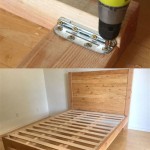When Can I Transition My Baby To A Toddler Bed?
Transitioning a baby from a crib to a toddler bed is a significant milestone, marking a step towards greater independence. However, there's no universally perfect time for this transition. The decision depends on several factors related to the child's development, safety, and individual needs.
One of the most obvious signs of readiness is physical development. When a child begins climbing out of the crib consistently, it’s a clear indication that the crib is no longer a safe sleeping environment. This typically occurs between 18 months and 3 years old, although some children may exhibit this behavior earlier or later. Climbing out poses a fall risk, making the transition to a toddler bed a necessary safety precaution.
Developmental milestones also play a crucial role in determining the optimal time for the switch. A child's cognitive and emotional maturity should be considered. If the child understands simple instructions and can follow routines, they may be better equipped to handle the transition. This includes understanding the concept of staying in bed and the boundaries of their new sleeping space. A child displaying signs of readiness for potty training may also benefit from the easier access to the bathroom a toddler bed provides.
Beyond developmental factors, practical considerations often influence the timing of the transition. If a new baby is on the way and the crib is needed, moving the older child to a toddler bed might be necessary. In these situations, it's advisable to make the switch several weeks before the new baby arrives to allow the older child time to adjust and avoid associating the change with the new sibling's arrival, which could potentially lead to resentment.
However, forcing a transition before the child is ready can lead to sleep disruptions and anxiety. Signs that a child is not ready might include increased nighttime awakenings, resistance to staying in the bed, or general anxiety related to bedtime. It's crucial to observe the child's behavior and adjust the approach accordingly. Patience and understanding are key during this process.
Preparing for the transition can make the experience smoother for both the child and parents. Creating a consistent bedtime routine is crucial. This routine could include a bath, story time, and quiet playtime before lights out. Maintaining the same routine after the switch to a toddler bed can provide a sense of familiarity and security.
Making the new sleeping environment inviting and safe is another essential step. Using familiar bedding, blankets, and stuffed animals can help ease the transition. A nightlight can provide comfort and alleviate any fears of the dark. Ensuring the room is childproofed is paramount. Securing furniture to the walls, covering electrical outlets, and removing any potential hazards will create a safe space for the child to explore and sleep in.
Introducing the toddler bed gradually can also be beneficial. Allowing the child to play in the bed during the day can help them become comfortable with the new sleeping arrangement. Naps can be a good starting point, gradually transitioning to nighttime sleep in the toddler bed. Positive reinforcement and encouragement can further facilitate the adjustment process.
Addressing potential challenges proactively is important. Expect some initial resistance and regression. The child might get out of bed frequently, test boundaries, or experience more nighttime awakenings. Consistent and gentle reminders to stay in bed are crucial. Returning the child to the bed calmly and quietly without engaging in prolonged interaction reinforces the expectation of staying in bed.
Maintaining consistent bedtime routines and responding to nighttime awakenings predictably will reinforce the new sleep pattern. Avoid introducing new sleep associations or reverting to previous sleep habits during the transition period. Consistency is key to establishing healthy sleep habits in the toddler bed.
While there’s no one-size-fits-all answer, considering the child's developmental stage, safety, and individual needs, alongside careful preparation and consistent responses, will help parents navigate the transition to a toddler bed successfully, fostering a positive and secure sleep environment for their growing child.
Consulting with a pediatrician or child development specialist can provide further guidance and personalized advice tailored to the child's specific circumstances. They can address any concerns and offer strategies for managing challenges during the transition.
Ultimately, the key is to be observant, patient, and responsive to the child's individual needs. A successful transition to a toddler bed is a collaborative process that respects the child's pace and fosters their growing independence.

When To Transition From A Crib Toddler Bed

How To Make The Toddler Bed Transition A Success Simply September

How To Move Your Child From Crib Toddler Bed Safely

When To Transition From Crib A Toddler Bed Heavenlybeds

Transitioning Toddler From Crib To Bed Everything You Need Know

Transitioning Toddler From Crib To Bed Everything You Need Know

When To Transition A Toddler Bed

When Should Your Baby Make The Transition From Crib To Toddler Bed Parachute

How To Transition Your Toddler A Floor Bed Outside The Toy Box

Toddler Sleep 101 Part Two Crib To Bed Transition Wee Bee Dreaming Pediatric Consulting
Related Posts







